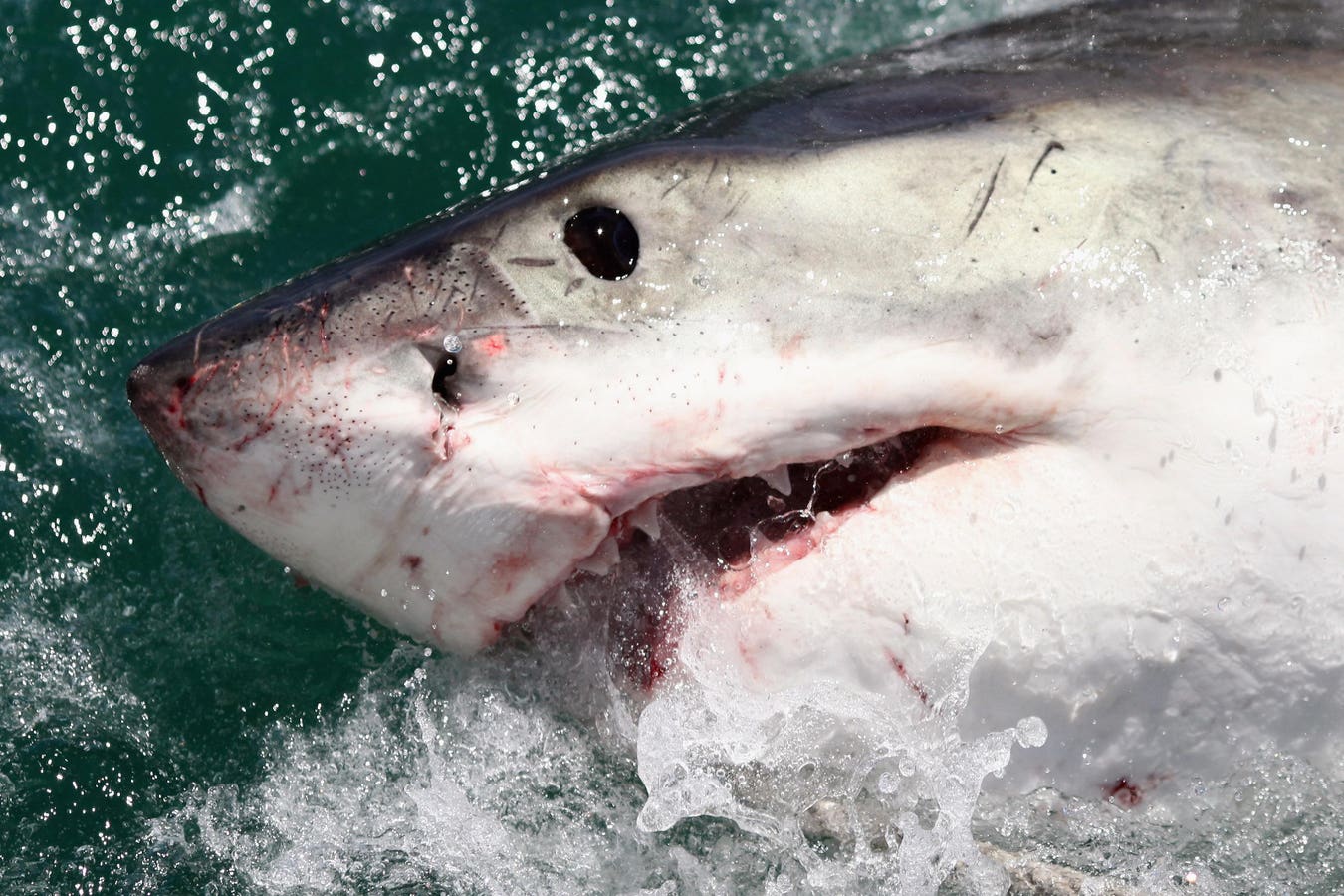Share to Facebook Share to Twitter Share to Linkedin Not just iconic predators, they are a vital component of marine ecosystems around the globe. Their … [+]
role in regulating prey populations and maintaining ecological balance worldwide is often overshadowed by the role they play in Hollywood movies, starring as bloodthirsty killers. Getty Images
A singular fin slices through the azure waters, gray cleanly cutting through the blue as it quickly speeds off. A mild inconvenience for it – being tagged with acoustic transmitters via a pole – and many others of its species off the east coast of North America. Great white sharks. Not just iconic predators, they are a vital component of marine ecosystems around the globe. Their role in regulating prey populations and maintaining ecological balance worldwide is often overshadowed by the role they play in Hollywood movies, starring as bloodthirsty killers. Yet, despite being one of the most well-known Chondrichthyans, their future is uncertain. In the North Western Atlantic, their population faced significant declines due to bycatch and capture in commercial and recreational fisheries. This led to a dramatic reduction in NWA numbers by as much as 73% during the 1970s and 1980s. However, protective measures introduced in 1997, including a ban on harvesting white sharks in the US Atlantic, alongside international agreements (e.g. the Convention on the Conservation of Migratory Species and the Convention on International Trade in Endangered Species) have facilitated their recovery. There have been promising signs of recovery for the NWA population according to experts like Dr. Greg Skomal, who studies the individuals off Massachusetts. Studies using acoustic and satellite tags have provided invaluable insights into their movement patterns, revealing high site fidelity, seasonal residency, and long-distance migrations. These formidable predators are known for their long-distance migrations and seasonal aggregations near pinniped colonies where water temperatures align with their preferred range (usually between 12°C and 24°C). These key sites include the Neptune Islands in South Australia, Guadalupe Island in Mexico, and various locations along the coasts of California and Cape Cod in the USA. Scientists have often taken advantage of their presence here, observing and tagging sharks here to learn more about their life histories. Through various biotelemetry studies, scientists have begun to unravel the mysteries of their horizontal and vertical space use in this region. Adult white sharks, for instance, have been observed shifting from near-coastal waters to pelagic habitats, making frequent excursions to deeper, mesopelagic zones. During the late fall, when water temperatures drop, they migrate to the southeast shelf waters of North Carolina to Florida, with some individuals traveling as far as the Gulf of Mexico. Cape Cod, MA – August 3: A view of a Great White Shark on a white shark research trip with the … [+]
Atlantic White Shark Conservancy. (Photo by David L. Ryan/The Boston Globe via Getty Images) Boston Globe via Getty Images But white sharks in the tropics? While not unheard of, white shark sightings here have been rare even though they overwinter in Florida’s Gulf and Atlantic shelf waters. Especially in the Bahamas! Historical records are scarce, with only a handful of documented cases over the past century, making a recent finding particularly exciting. Led by Dr. Tristan Guttridge of the non-profit Saving the Blue, a team have provided the first evidence of white sharks using the waters of the Tongue of the Ocean (TOTO), a deep-sea trench adjacent to Andros Island in the Bahamas. The white sharks detected in the Bahamas were primarily larger juveniles or sub-adults, suggesting that their presence may be linked to exploratory behavior or the recovery of their population in the NWA. Detected individuals ranged in size from 2.1 to 3.7 meters and included both males and females. The study revealed that these sharks used the shelf edge habitat along the reef wall, primarily at depths around 25 meters, indicating a preference for the transition zone between the reef and deepwater habitats. The detections were also concentrated between November and May, suggesting a seasonal presence in the area. MORE FOR YOU Today’s NYT Mini Crossword Clues And Answers For Friday, August 2 Why Did The NFL Change Kickoff Rules? The ‘Dynamic Kickoff,’ Explained NYT ‘Strands’ Hints, Spangram And Answers For Friday, August 2nd So, perhaps white sharks might be returning to historically important parts of their range as populations recover. And what a place to do so! The Bahamas’ designation as a Shark Sanctuary and its longstanding ban on commercial longlining and gillnetting make it an important refuge for white sharks and other shark species. Here, they may be exploiting the productive mesopelagic zone while in the Bahamas, potentially feeding on the abundant coastal sharks, rays, and fish species that inhabit this region. “[Dr. Skomal’s previous work has] hypothesized that during their overwintering residency period, white sharks




